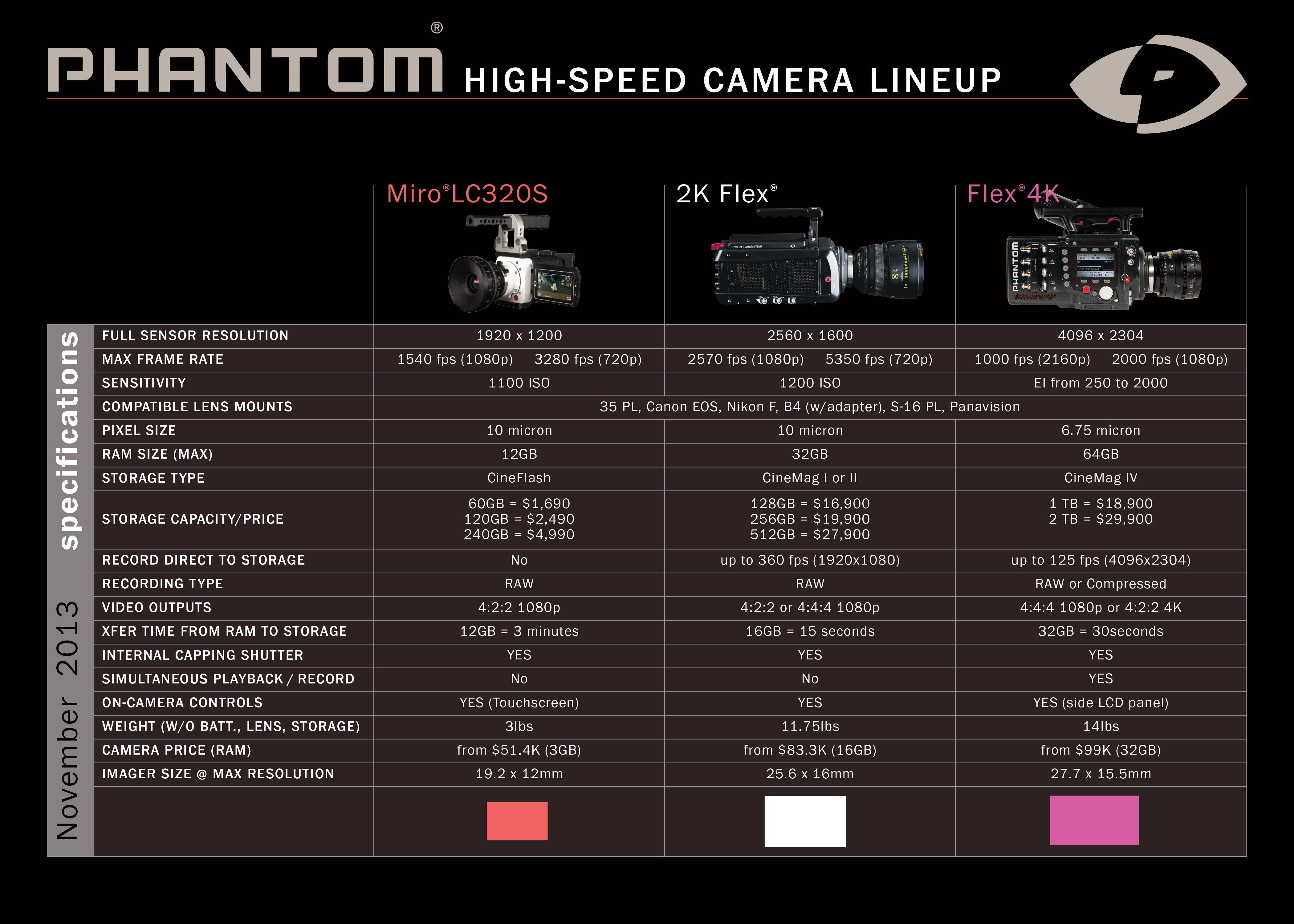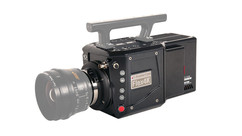The chart above outlines some of the key technical specs (click on it to see a larger version). While it's important to know the basic specifications of the cameras, these specifications also translate into differences in production workflow, all of which need to be taken into consideration when choosing the right Phantom for your project.
At the top of the pyramid, with the most brute power, is the new Flex4K - capable of 1,000fps at 4K resolution. A new "industry familiar" user interface, an onboard battery option, and other convenient features make the Flex4K a compelling choice for any high-end project. For the first time, a Phantom camera will be capable of onboard recording of an industry standard compressed codec or RAW; it will also have the ability to output 4K, ultra-high-definition video. Like all of these Phantom cameras, the Flex4K can be equipped with all major lens mounts including PL, Canon and Panavision. From a numbers standpoint, Anamorphic will look fantastic on the Flex4K because of the high resolution and slightly larger sensor, which will mean less focal length shift.
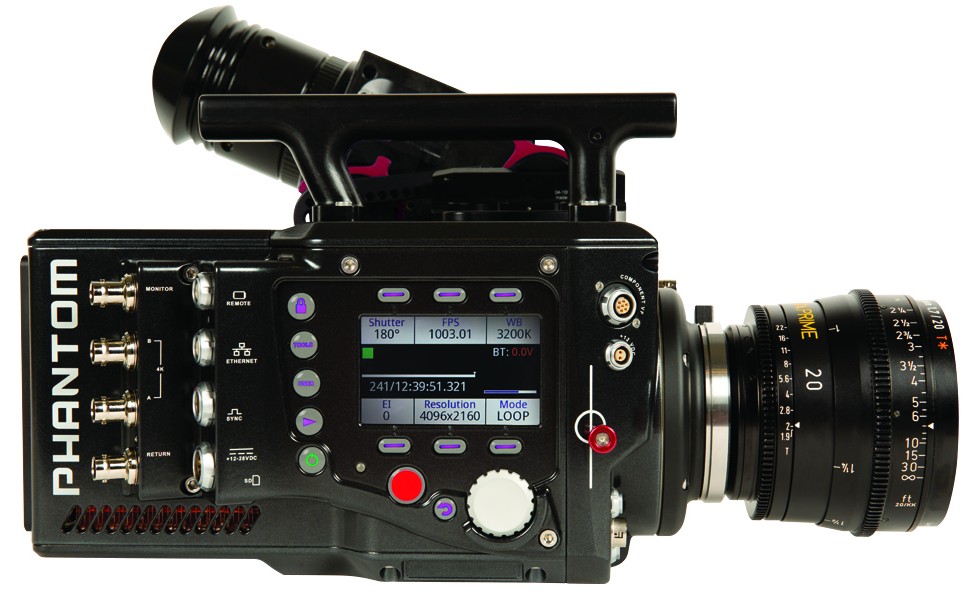
In the middle position is the 2K Flex, a camera that remains a strong choice for many projects because it is so nimble. When recording 1080p, the 2K Flex has a slight edge in frame rate over the Flex4K (2570fps vs 2000). Because the pixel size is bigger (10 micron vs 6.75 for 4K), the 2K is more light sensitive, which can be important for some high-speed shots. The 2K Flex has an exposure index around 1200, where the Flex4K has a range that centers between 640 and 800; testers of both cameras report about 2/3 of a stop effective difference. Given the expected demand for the Flex4K and the fact that some owners will be trading up, there could be some nice deals to be made for the 2K Flex, both for used purchase and on the rental market.
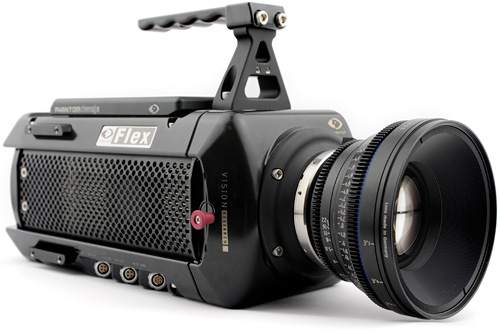
The Miro LC320S remains the baby of the group, and like all babies, it has some irresistible features. Weighing in at only three pounds, the Miro is clearly the most portable Phantom. High speed combined with fast camera movement can create jaw-dropping shots and the Miro's light weight and small size make it easy to hold, move and put in tight spaces. With a top speed of over 1500fps at 1080p, the Miro is also no slouch in the high-speed department. The Miro LC320S is also the most affordable of the lineup with well-equipped packages coming in around $65K. The 2K Flex and Flex4K packages with CineMags are more than double that.
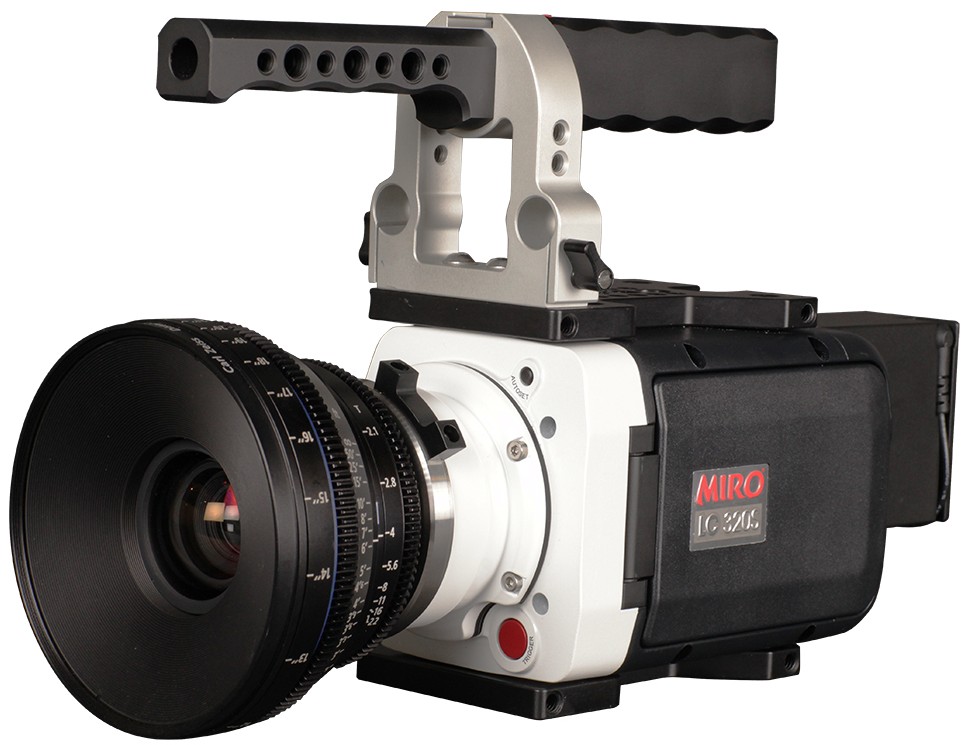
Why are the Flex cameras more expensive? In addition to increased resolution, there is significantly higher capacity RAM. The maximum RAM of the Miro is 12GB, while the 2k Flex can have 32GB and the Flex4K can have up to 64GB. This capacity defines how long a shot can be. Shooting 1,000fps at 1080p, the Miro can record a 3.6 second shot; at the same frame rate and resolution the 2K Flex and Flex4K can each record a 9.1 second shot.
In many ways the differences between these Phantoms is an issue of bandwidth. The bandwidth or throughput speed of the Flex4K is over nine Gigapixels per second, the 2K Flex is six Gigapixels/sec, and the Miro is 3.2Gpix/sec. This specification defines the performance of the camera in terms of resolution and frame rate. It also also defines other key aspects of on-set workflow.
All Phantoms can record in "loop mode". In this mode, the images/data are first captured in RAM, which acts like a buffer or a loop. If the shot is to be kept, it needs to be transferred to the onboard removable storage, either a CineMag or CineFlash. The time it takes to make this transfer, from RAM to on-board storage is a function of bandwidth. The Miro can transfer its 12GB of RAM in about three minutes; the Flex cameras can transfer that much data in about 12 seconds! This means the on-set workflow will be much faster with the Flex cameras. Different projects will have different requirements for how quickly the camera is ready to "go again", but anyone who has been under the gun with an impatient director knows how important turn around time can be. This aspect of on-set workflow is something to consider when choosing your Phantom camera.















